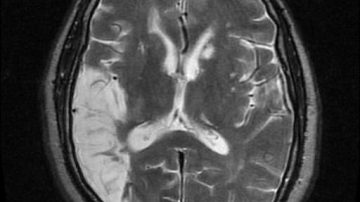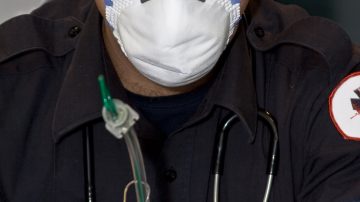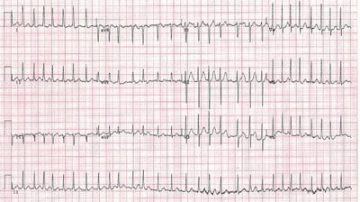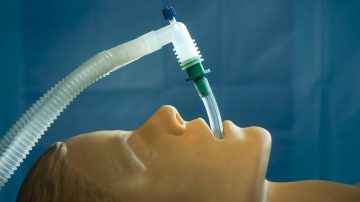The American Heart Association/American Stroke Association has updated its comprehensive acute ischemic stroke care guidelines in 2013. The following is a summary of the most important new recommendations: Teleradiology networks are recommended for community hospitals that lack access to neurological…
Read MoreCardiac arrest patients who were intubated had similar outcomes to those who had a supraglottic airway device (e.g., King tube) inserted in the pre-hospital setting. A literature review of 5 studies and over 300,000 patients with pre-hospital cardiac arrest demonstrated…
Read MoreTranexamic acid is a simple little molecule, just a synthetic derivative of the amino acid lysine. But it’s also a potent pro-hemostatic drug that binds plasminogen and plasmin and stops the degradation of fibrin (the stuff in blood clots). Now…
Read MoreCompared with warfarin, the new agents significantly reduced all-cause and vascular mortality. The new direct-acting oral anticoagulants (DOACs; dabigatran, rivaroxaban, apixaban, and edoxaban) have been found to be noninferior to vitamin K antagonists in clinical trials of stroke prevention in…
Read MoreAmong the 53% of patients with negative bronchoalveolar lavage results, alternative explanations for fever and for pulmonary infiltrates were established in 61% and 46%, respectively. Chest x-ray abnormalities, leukocytosis, purulent tracheal aspirate, or fever in a mechanically ventilated patient raise…
Read MoreA recent study concluded that assessing the ability of patients to list the months of the year backwards in addition to an assessment of subjective confusion and disorientation was accurate at diagnosing delirium in hospitalized adult patients. The months of…
Read MoreA new randomized controlled trial out of the UK that investigated 540 patients with ARDS from sepsis showed no benefit of statins. The study investigated the use of Simvastatin 80 mg/day vs placebo in patients with ARDS from sepsis and…
Read MorePreface: Nice summary of the changing pathogenic organisms causing severe sepsis. This summary also displays how improved sepsis recognition and management has decreased mortality from 40% to 28% over the last decade. Mortality decreased from 40% to 28% overall. Although…
Read MorePreface: The SPARCL trial made clinicians wary that high-dose statins may increase the risk of intracranial hemorrhage (ICH). This new observational study suggests that continued statin use after ICH appears to improve outcomes. The SPARCL trial (Stroke Prevention through Aggressive Reduction…
Read MorePreface: New study identifies 7 interventions to decrease the 30-day readmission rates. The most effective interventions involved case workers and Improving patients ability to provide self-care at home. Study design: Meta-analysis. Setting: Forty-seven studies in multiple locations. Synopsis: This study evaluated…
Read MoreAli S. Raja, MD, MBA, MPH, FACEP reviewing Al Deeb M et al. Acad Emerg Med 2014 Aug. A meta-analysis demonstrates that ultrasound performs as well or better than other tests for the diagnosis of pulmonary edema in patients with…
Read MoreIn nonoperatively managed patients, ≈7% of patients had recurrent episodes, and 2% required emergency surgery during 4 years of follow-up. Some surgeons promote elective surgery after one or two episodes of uncomplicated diverticulitis to prevent recurrences that might require urgent…
Read MoreA large cohort study out of Denmark examining over 17,000 ER visits by adults determined that the absence of all three criteria fever, elevated CRP and SIRS criteria had a 99.5% negative predictive value for excluding bacteremia. Fever, elevated CRP level,…
Read MoreRisk for postoperative adverse cardiovascular events was especially high during the first 9 months after stroke. If possible, you should wait at least 9 months and preferably 12 months after an ischemic stroke to undergo elective non cardiac surgery. Stroke…
Read MorePrevious trials have shown that catheter-directed thrombolysis (CDT) for proximal deep vein thrombosis has a lower rate of post-thrombotic syndrome compared with systemic anticoagulation alone. However, a new retrospective cohort study shows that the mortality rates are equivalent and the rates of transfusion,…
Read MoreCategories
- ACLS (1)
- Arterial line (33)
- Cardiovascular diseases (77)
- Central line (55)
- Chest Tube (39)
- Dermatology (4)
- Emergency Procedures (138)
- Endocrinology (6)
- Endotracheal Intubation (36)
- Events (24)
- FAST Exam (12)
- Featured (112)
- Featured Procedure (42)
- Gastrointestinal diseases (32)
- Ginecology (3)
- Glidescope Intubation (21)
- Hematology (33)
- Hospital Procedures (85)
- Infections (32)
- Intraosseous line (8)
- King Tube (27)
- Laryngeal Mask Airway (18)
- Lumbar Puncture (36)
- Mechanical Ventilation (34)
- Medical General (95)
- medical procedures (258)
- Needle Decompression (6)
- Nephrology (11)
- Neurological diseases (12)
- Oncology (4)
- Paracentesis (32)
- Pericardiocentesis (3)
- Procedural Sedation (19)
- Respiratory diseases (85)
- RUSH Exam (8)
- Thoracentesis (37)
- Traumatology (24)
- Travel (27)
- Ultrasound-Guided Peripheral IV (13)














